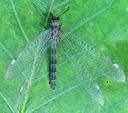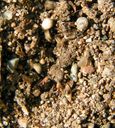Pit-trapping Antlions
Myrmeleon
Classification
- Phylum: Arthropoda
- Subphylum: Hexapoda
- Class: Insecta
- Order: Neuroptera
- Suborder: Myrmeleontiformia
- Family: Myrmeleontidae
- Subfamily: Myrmeleontinae
- Tribe: Myrmeleontini
- Genus: Myrmeleon
Pronunciation
How to pronounce Myrmeleon: //mɪrˈmiːliːɒn//
These audio files are automatically generated. While they are not always 100% accurate, they are a good starting point.
Images






Summary
Myrmeleon is a genus of antlions with several species found primarily in North America. Their larvae create distinctive funnel-shaped pits in sandy substrates to trap prey, usually ants. The adults exhibit noticeable physical characteristics that aid in identification, contributing to their identification in the study of entomology.
Physical Characteristics
Myrmeleon adults are typically recognizable by their stockier build, white pterostigmas, and often simpler body markings.
Identification Tips
Look for their characteristic funnel-shaped pits dug in loose sand, which are unique to their larvae. Adult identification can be aided by stocky body structure and color patterns.
Habitat
Larvae inhabit sandy areas where they can dig pits; adults may be found in similar environments.
Distribution
12 species in the region (primarily in the eastern and southwestern United States) and about 189 species worldwide.
Diet
Larvae feed primarily on ants and other small insects trapped in their pits.
Life Cycle
Larvae create funnel-shaped pits to trap prey. They are capable of moving backwards out of their pits to avoid predation; life cycle details may vary by species.
Reproduction
Not specifically detailed; however, like many insects, reproduction likely involves egg-laying in suitable habitats.
Predators
Larvae can fall prey to dune crickets, such as Schizodactylus inexspectatus.
Ecosystem Role
Myrmeleon species play a role in controlling ant populations and serve as prey for higher trophic levels.
Collecting Methods
- Sweep nets
- Pitfall traps
Preservation Methods
- Dry mounting
- Alcohol preservation
Tags
- Myrmeleon
- antlions
- insects
- Neuroptera
- Myrmeleontidae